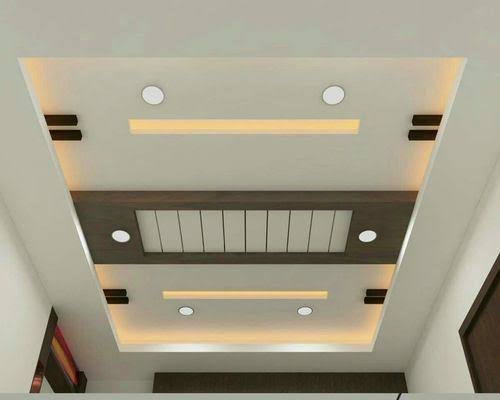POP ceilings have always been around. It was very popular during the Renaissance period, featuring in most of the buildings, like the famous Sistine Chapel and other buildings scattered across modern Italy, and it is still very much popular today.
It is quite classy and has a way of adding style and complementing the room or space it is used in. It is one type of ceiling that never goes out of style. Instead, it takes on new designs. One reason why it has remained popular is because of the range of designs and styles that can be achieved with it. Unlike other types of ceilings, POP ceiling allows you to be creative with your design, so you can achieve almost anything you want with it.
What is POP Ceiling Made From?
POP ceiling, also known as false ceiling, is made from POP or Plaster of Paris, a building material. It feels and looks like cement, except that it is pure white and is softer than cement. The main component used in making it is Gypsum, which allows it to harden. Besides being used to make ceilings, POP is also used to make other things like statues, pillars, monuments, and also used for coating walls and other structures. In Nigeria, people use POP to touch up their homes and POP ceilings is becoming more and more common.
Still, despite how widespread it is being used, people argue against the use of POP ceilings because of alleged health effects, even though there is very little material available to support the argument.
One of the common arguments is that POP has a negative effect on the environment. But that is not entirely true. Compared to other materials like PVC, POP is very safe. This is because it is made from gypsum, a naturally occurring substance. This makes it biodegradable, meaning that it would disintegrate without having any harmful effect on the environment.
As for the health effect when used in the home, there is almost none. Remember that the walls of the house are plastered with cement, which is made from limestone and other chemicals and coated with paint, which contains all sorts of chemicals. But their health effect is almost inconsequential, not to talk of POP ceilings, that is made from just POP powder and water.
Although, one common health effect that may arise from using POP ceilings is the appearance of mold. Mold often grows in damp places like walls and surfaces like POP ceilings. But it is not a POP ceiling problem alone as it could also appear on floors, shelves, books, clothes, and so on.
POP ceilings pose no health risks and should be encouraged instead as it has so many health benefits, including
- POP ceiling is fireproof
- POP ceiling can be crafted into any form of design or shape, based on what a person wants.
- POP ceiling has a classic look that never goes out of style.
- POP ceiling gives the house a neat look as it can be used to hide ductwork, pipes, and electrical wiring.
YOU SHOULD ALSO READ:
- 7 Worrying Health Effects of Late-night Sleeping
- 5 Negative Health Effects of Sugary Drinks
- The Health Effects of E-waste in Nigeria
- 5 Health Effects of Carbonated Drinks on the Body
- 5 Must-Know Health Effects of Junk Food
- Adverse Health Effects of Smoking Shisha
- 6 Unknown Health Effects of Air Pollution in Nigeria
Collins Nwokolo is a human physiologist, writer and health enthusiast. He loves writing helpful articles on health and fitness, which he enjoys sharing with everyone.








